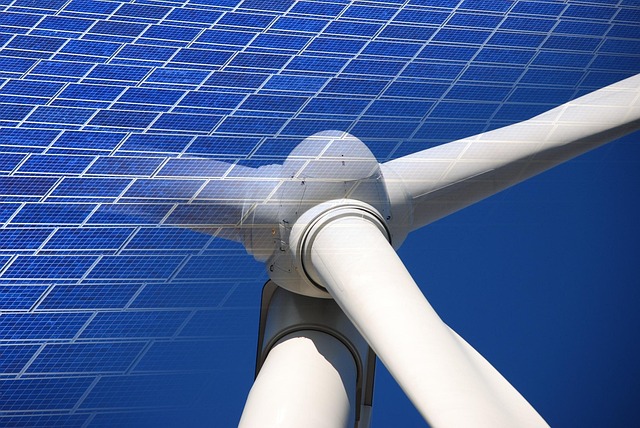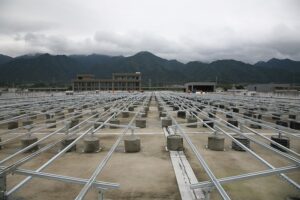
Clean Energy Innovations: Breakthroughs That Are Changing the Game
In recent years, the global climate crisis has spurred a relentless quest for clean energy innovations that can help mitigate environmental impact while meeting humanity’s energy needs. This article explores some of the most groundbreaking clean energy technologies and innovations that are changing the game and bringing us closer to a sustainable future.
The Rise of Renewable Energy Sources
The transition from fossil fuels to renewable energy sources has become a hallmark of the global movement toward sustainable energy. Wind, solar, hydro, and geothermal energy are leading the charge, providing cleaner alternatives to traditional energy sources.
Solar Power Innovations
Solar energy has emerged as one of the most accessible and rapidly growing energy sources. Recent innovations in solar technology are making it more efficient and cost-effective. Third-generation solar cells, such as perovskite solar cells, promise higher efficiency rates at reduced manufacturing costs. Unlike traditional silicon-based solar cells, perovskite cells can be produced using less energy and can be more easily integrated into building materials.
Additionally, solar tracking systems that follow the sun’s path can significantly increase energy output. These innovations allow solar panels to capture more sunlight throughout the day, thus enhancing overall efficiency.
Advancements in Wind Energy
Wind energy has also seen significant advancements. The development of larger and more efficient wind turbines has made it possible to generate more power from fewer installations. Floating wind farms, which can be deployed in deeper waters, open up new possibilities for harnessing wind energy in areas previously considered unsuitable for traditional turbines. These floating structures can capture stronger, more consistent winds and provide energy where resources were once limited.
Energy Storage Solutions
As reliance on intermittent renewable sources grows, the need for effective energy storage solutions is critical. Innovations in battery technology are essential for storing energy when production exceeds demand and supplying it when demand is high.
Lithium-Ion and Beyond
Lithium-ion batteries have dominated the market for years, but newer technologies are emerging. Solid-state batteries, for instance, promise to offer higher energy density, faster charging times, and improved safety compared to their lithium-ion counterparts. This could revolutionize not just energy storage but also the electric vehicle market, paving the way for longer ranges and reduced charging times.
Other promising technologies include flow batteries, which store energy in liquid electrolytes and can be scaled more easily for larger applications. These innovations have the potential to balance the grid and provide reliable power from renewable sources.
Smart Grids and Energy Management Systems
The integration of smart technologies into energy management systems is transforming how energy is distributed and consumed. Smart grids utilize advanced communication and information technology to optimize energy flow and improve efficiency.
Demand Response Programs
One of the most notable features of smart grids is their ability to implement demand response programs. These programs encourage consumers to reduce or shift their power usage during peak times in exchange for incentives. By leveling out demand, smart grids can minimize the need for additional power generation and decrease strain on the electrical grid.
Furthermore, the integration of Internet of Things (IoT) devices allows for real-time monitoring and management of energy consumption. Smart meters provide consumers with better insights into their energy usage, helping to promote energy-saving behaviors.
Hydrogen Fuel Cells: A Clean Energy Alternative
Hydrogen fuel cells are gaining traction as a viable clean energy alternative, especially in sectors that are hard to electrify, such as heavy transportation and industrial processes. When hydrogen is used in a fuel cell, it combines with oxygen from the air to produce electricity, with water and heat as the only byproducts.
The Promise of Green Hydrogen
Green hydrogen, produced through the electrolysis of water using renewable energy, is particularly promising. As the technology advances, green hydrogen can become a major player in decarbonizing various industries, including aviation, shipping, and steel production. Companies and governments are investing heavily in hydrogen infrastructure, creating a new landscape that could change the global energy economy.
Nuclear Innovations: The Next Generation
While traditional nuclear power has faced challenges related to waste disposal and safety, next-generation nuclear technologies offer fresh hope for a clean and reliable energy source. Small Modular Reactors (SMRs) and advanced reactor designs aim to improve safety, efficiency, and waste management.
Small Modular Reactors
SMRs have a smaller footprint and can be built in factories and shipped to their final locations, allowing for more affordable and accessible nuclear power. Their innovative designs include passive safety systems that require no external power or operator intervention, addressing some of the safety concerns that have historically plagued nuclear energy.
With these advancements in nuclear technology, countries are re-evaluating the role of nuclear power in their energy mix as a low-carbon alternative to fossil fuels.
Biomass: Sustainable Energy from Organic Materials
Biomass energy, derived from organic materials such as agricultural residues, wood, and even municipal waste, offers a renewable source of energy that can complement other clean energy technologies. Recent advances in biochemical processes and anaerobic digestion have enhanced the ability to convert biomass into usable energy.
The Role of Biofuels
Biofuels, such as biodiesel and bioethanol, are increasingly being used as alternatives to petroleum fuels. Innovations in synthetic biology and genetically modified organisms are making it possible to produce biofuels more efficiently and with lower environmental impacts. These technologies could potentially transform agriculture and waste management while reducing greenhouse gas emissions.
Geothermal Energy: An Untapped Resource
Geothermal energy harnesses the Earth’s internal heat, providing a reliable and constant power source. While traditionally limited to regions with active volcanic activity, new technologies are expanding geothermal’s reach through Enhanced Geothermal Systems (EGS).
Enhanced Geothermal Systems
EGS involves injecting water into hot rock formations to generate steam, which can then be used to produce electricity. This technology can potentially tap into vast geothermal resources worldwide, making it an exciting frontier in the clean energy landscape.
The Future of Clean Energy Innovations
As the world faces the challenges of climate change, transitioning to clean energy will require unprecedented collaboration between governments, industries, and consumers. The innovations discussed not only offer hope for a more sustainable future but also signal a paradigm shift in how energy is produced, consumed, and managed.
Ongoing research and development, investment in smart infrastructure, and supportive policies will be essential to realizing the full potential of these clean energy innovations. By leveraging advancements in technology and embracing a multifaceted approach to energy production, we can pave the way for a cleaner, greener, and more resilient energy future.
Conclusion
Clean energy innovations are not merely fleeting trends; they represent a significant transformation in the way humanity approaches energy needs. The continued advancement of solar, wind, hydrogen, nuclear, biomass, and geothermal technologies will be integral to building a sustainable future. As we continue to explore and expand these innovations, the dream of a world powered by clean, renewable energy is coming closer to reality.



